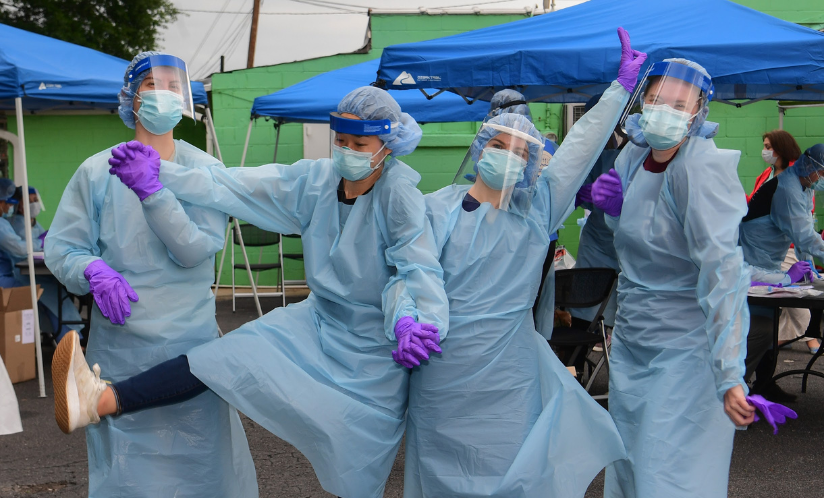Top Five Reasons Why We Love Public Health

When public health is working well, the public is often unaware. That is because some of the greatest accomplishments in public health history are now viewed as the norm.
In 1900, 30% of children died before their first birthday in some U.S. cities. A quarter of all foodborne disease outbreaks in the U.S. were caused by raw milk in 1938. With advances like childhood vaccinations, milk pasteurization, and hand hygiene, those numbers and more have dropped drastically, increasing life expectancy by a huge margin.
Public health is constantly working behind the scenes to keep people healthy. It monitors our safe food and water systems, tracks disease outbreaks, keeps tabs on the risks you face at work, and responds to emerging health threats. For National Public Health Week, we are rounding up the top five accomplishments that make us love public health.
1) Food Safety
In the early days of industrialization, before the days of food regulations, the food industry often cut corners to maximize profit—to the detriment of health. Things changed in 1906 with the introduction of the Food and Drugs Act, which required companies to label food and drugs and prohibited those labels from being false or misleading. This act was also the beginning of the U.S. Food and Drug Administration.
Food safety also improved with milk pasteurization, first discovered in 1862 by Louis Pasteur. The process kills off dangerous bacteria like Salmonella and E. coli that once caused widespread illness. Chicago was the first city in the U.S. to implement mandatory pasteurization in 1908, and within a decade the city’s infant mortality rate dropped by two-thirds.
2) Hand Hygiene
Although handwashing now sems like a no-brainer, less than two centuries ago it was not yet common practice. It was not until the mid-1800s that Hungarian doctor Ignaz Semmelweis discovered the benefits.
The hospital where Semmelweis worked had two maternity clinics, one staffed by doctors and medical students and one staffed by midwives. The doctors started their day by performing autopsies then went directly to delivery rooms without cleaning their hands. The clinic staffed by midwives, who performed no autopsies, had significantly lower maternal mortality rates. His hospital became the first to implement mandatory handwashing, and others soon followed.
Beyond the health care setting, widespread handwashing also helps prevent the spread of both respiratory and diarrheal diseases, keeping entire communities healthier.
3) Antibiotics
The development of penicillin in 1928 ushered in a new era of once-fatal infections becoming curable. Tuberculosis, syphilis, and streptococcal and staphylococcal infections are just a few of the conditions that have become lesser threats thanks to widely available antibiotics.
Antibiotics also prevent and treat secondary infections that can occur after surgery, in chemotherapy patients, or alongside other chronic conditions. In that way, they have made many of our major modern advances in medicine possible.
4) Children’s Health
In 2022, only about 0.5% of children in the U.S. died before their first birthday. The drastic improvement in children’s health since the turn of the 20th century can be attributed to many inter-related factors, many of which were already mentioned in this list: safe food and water, improved sanitation and hygiene, and antibiotics.
Another important factor is childhood vaccination. It’s estimated that since the 1970’s, childhood vaccination against common illnesses like measles and whooping cough has saved over 150 million lives and contributed to reducing infant deaths by 40% globally.
5) Workplace Safety
Because we spend so much time at work, improving working conditions leads to an improvement in overall health and well-being.
In the late 1800s, a doctor named Alice Hamilton revolutionized workplace safety when she researched things like carbon monoxide poisoning in steelworkers, mercury poisoning in hatters, and “dead fingers,” a condition caused by continuous use of jackhammers.
Continued research into occupational safety and the cost of workplace injury supports regulations and reforms that keep workers safe. The Occupational Safety and Health Administration, which was established in 1970, has used regulations to reduce workplace deaths by 63% and workplace injuries by 40%.